Like Yoga 13 and Twist, Yoga 11 hybrid
laptop also has a design that is as impressive, with the screen that can rotate
an angle of 360 degree, allowing using it in different ways.
Yoga 11 looks quite similar to Yoga 13,
though their specs are totally different. Particularly, Yoga 11 is built on ARM
structure with SoC (system in chip) NVIDIA Tegra 3 plus Windows RT OS while
Yoga 13 uses x86 structure, Intel Ivy Bridge and Windows 8 OS. This is also the
difference between Yoga 11 and other hybrid laptops.
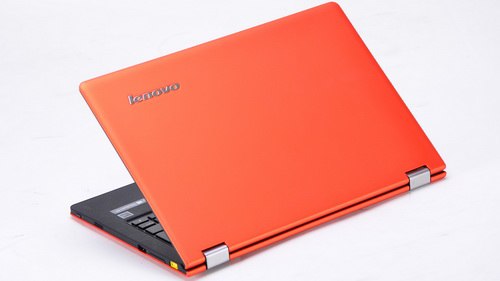
Idea
Yoga 11 has a striking and dynamic coat
With a dimension of 29.8x20.4x1.56cm and a
weight of 1.27kg, Idea Yoga 11 looks markedly more lightweight than standard
models but in term of screen size, connectors and handiness, Yoga 11 couldn’t
rival. This is normal as the combination of tablet-like and laptop-like
features in a limited space means that the manufacturer has to cut off some
less important components.
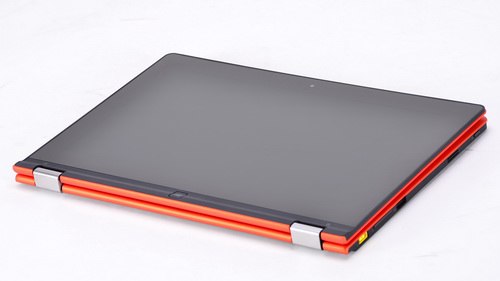
The
screen can rotate an angle of 360 degrees to turn the device into a tablet
Interestingly, Yoga 11 has a screen which
can rotate by 360 degrees thanks to the special dual-hinge design, allowing for
different using ways at custom. To be handier, Yoga 11 is also integrated with some
function keys, such as Windows for fast-switching between screen modes, volume,
screen lock and power.
The chassis is coated by a soft plastic
layer featuring carbon fiber beneath. The frame is made of magnesium alloy thus
the device is generally lightweight yet it is still sturdy enough to ensure
users.
Another good side is that the keyboard and
the touchpad will automatically lock when the screen swivel by an angle larger
than 180 degrees, to avoid mistyping. Additionally, the keyboard and the
touchpad is placed in a lower level than the frame and protected by rubber feet
to avoid physical contact when rotating the keyboard.
Connectors and upgradability
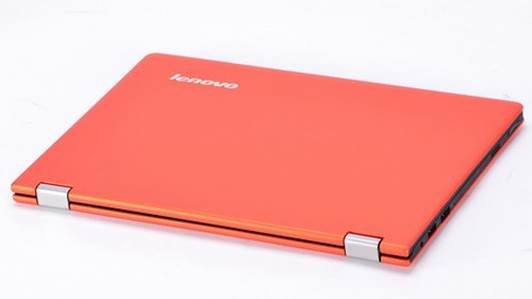
The
model’s connection is pretty limited
Due to size limit, the device’s peripheral connectivity
is limited too. In detail, Yoga 11 supports HDMI, 2x USB 2.0, 2-in-1 card
reader and audio out, along with common wireless connections: Bluetooth 4.0 and
Wi-Fi 802.11b/g/n.
Speaking of hardware support according to
user’s demand, this is impossible since Yoga 11 uses SoC (system on chip) Tegra
3 from NVidia. Crucial components, like GeForce ULP, 2GB of DDR3L RAM memory
and eMMC flash (replacing hardware) are also directly integrated onto the
mainboard.
User interaction
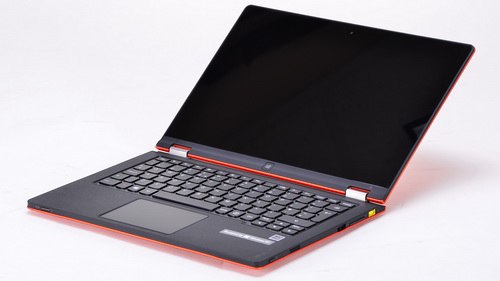
The
5-pointing touch screen features WXGA resolution and IPS technology
ThinkPad Yoga 11 is equipped with an 11.6in
screen plus 1,366x768pixel WXGA resolution. The IPS panel gives the screen’s
accurate colors and 170-degree viewing angle. In office conditions, practices
showed that display was clear, sharp and bright. Color changing, darkness as
well as shades of gray/white are distinguishable, making it comfortable to work
with texts. An equipment of a glass screen that can absorb light and deliver a
brightness of 350nit makes outdoor usage bring out vibrant and clear display
though the quality is still not the same as in office.
Besides, we also realized there was no
difference between Yoga 11’s 5-pointing touchscreen and 10-pointing one during
tests. The feeling of smoothness due to low friction makes maneuver easy and
accurate, fast-responding to fingers’ movement. Though, the 11.6in screen’s
image display is still smaller than that of 12.5in or 13.3in ones featuring
similar resolution (1,366x768). User needs more time to get used to more
accurate maneuvers with icons and commands in desktop interface.
Performance
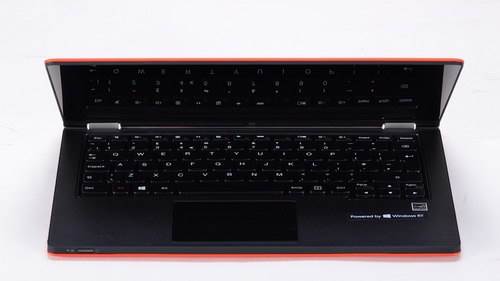
Yoga
11’s biggest problem doesn’t lie in either performance or hardware
configuration, but few supports for Windows RT
We tested with an ARM-built Yoga 11 with
NVidia Tegra 3 chip (1.2GHz clock rate), GeForce ULP integrated graphics, 2GB
of DDR3L memory and eMMC flash (replacing hard drive) featuring 64GB space.
The biggest problem of Yoga 11 as well
ARM-based devices is the small Windows RT ecosystem which finds difficult
meeting user’s demand for both working and playing, unlike Windows or Mac OS. Specifically,
Windows RT doesn’t support Intel x86 based apps thus it’s impossible to apply
benchmarking tools to judge this model. So, some tests in this article are relative,
unable to judge the system’s real strength.
Detailed tests
Through web-surfing and office apps, Yoga
11 was seen to meet multi-tasking. Despite RAM memory limited (2GB), but with
the advantage of Tegra 3 chip, the device still handled some photo-editing tasks
in Fhotorom app.

Result
from Speed Test Pro
Through Speed Test Pro, the processes were
measured at 108.3MB/s for 4-core processor, 64.4MB/s for RAM, 22,519MB/s for
GeForce ULP and the fastest 63.5MB/s (read) plus 32.1MB/s (write) for MMC
flash.
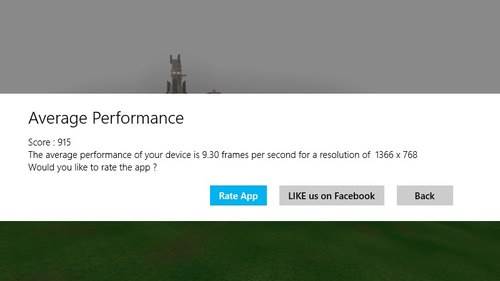
Graphics
test result from 3D Relative Benchmark
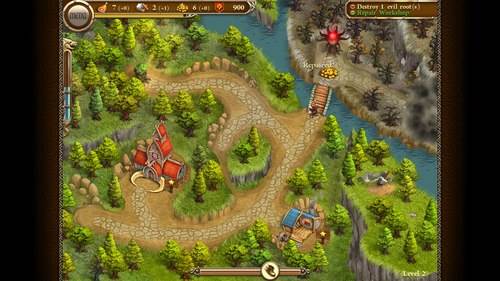
Despite
the integrated GeForce ULP graphics card, such 2D game like Northern Tale still
ran fluently
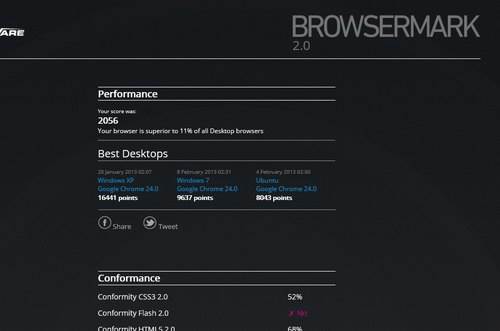
Yoga
11’s web-surfing is highly appreciated via BrowserMark 2.0
RightWare BrowserMark positively gave the
browser’s processing a score of 2,056
Battery life
Testing battery life by surfing web,
viewing news and playing music at the same time, setting brightness at 40%
(like in battery mode), the total time allotted was 14h 36min. When displaying HD
720p movie, at maximum brightness (100%), the total time allotted was nearly
10h. This is also ARM-based device’s advantage, in performance, over Intel’s
x86 platforms.
|
Lenovo Ideapad
Yoga 11 technical specs
·
Dimension: 29.8x20.4x1.56cm
·
Weight: 1.27kg
·
Processor: NVidia Tegra 3 (1.2 GHz)
·
Graphics: GeForce ULP
·
RAM: 2GB (DDR3L)
·
Hard drive: eMMC 64 GB
·
Screen: 11.6in WXGA (1,366x768pixel), LED IPS,
5-point capacitive touchscreen
·
Webcam: 1.0MP, HD 720p
·
Ports: HDMI, 2x USB 2.0, 2-in-1 card reader,
audio
·
Connectivity: Bluetooth 4.0, Wi-Fi 802.11b/g/n
·
OS: Windows RT
|